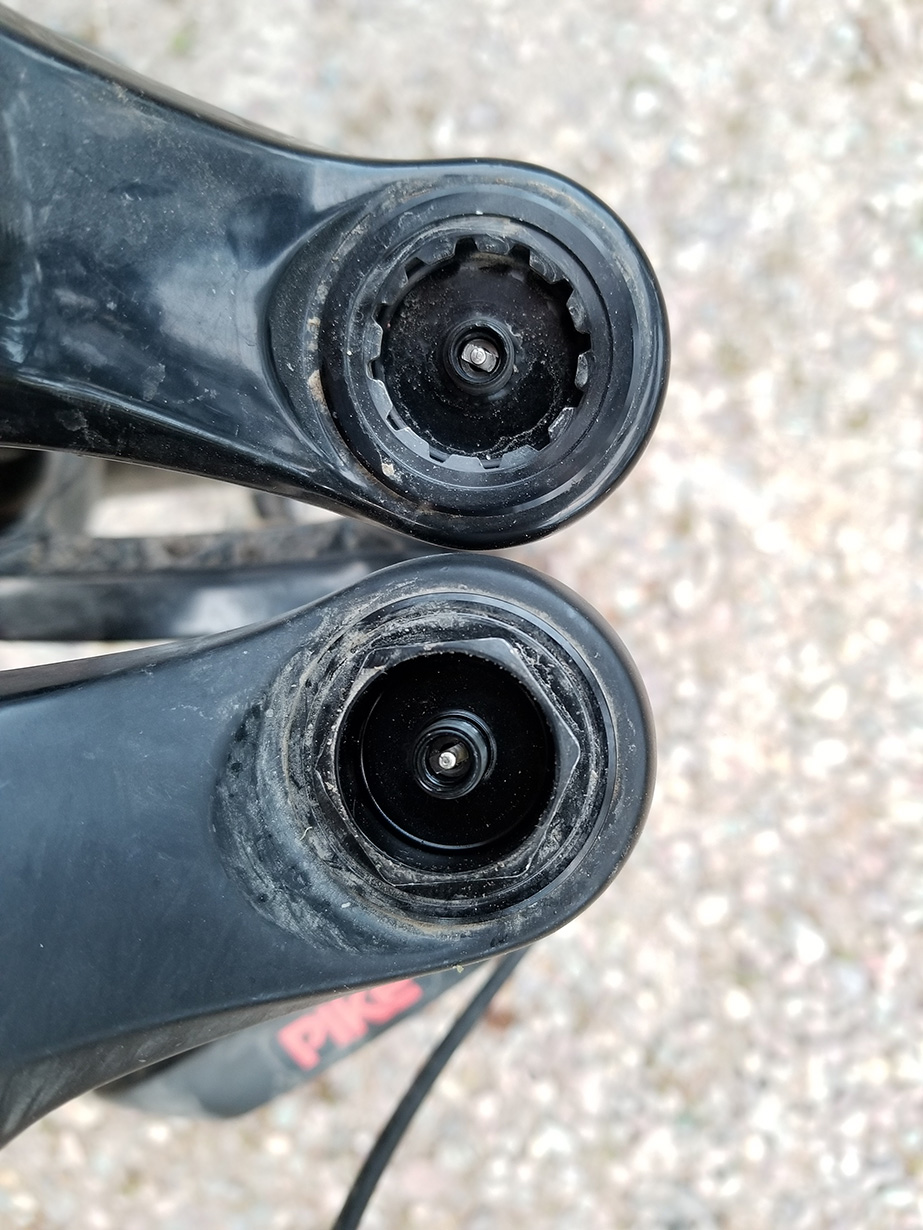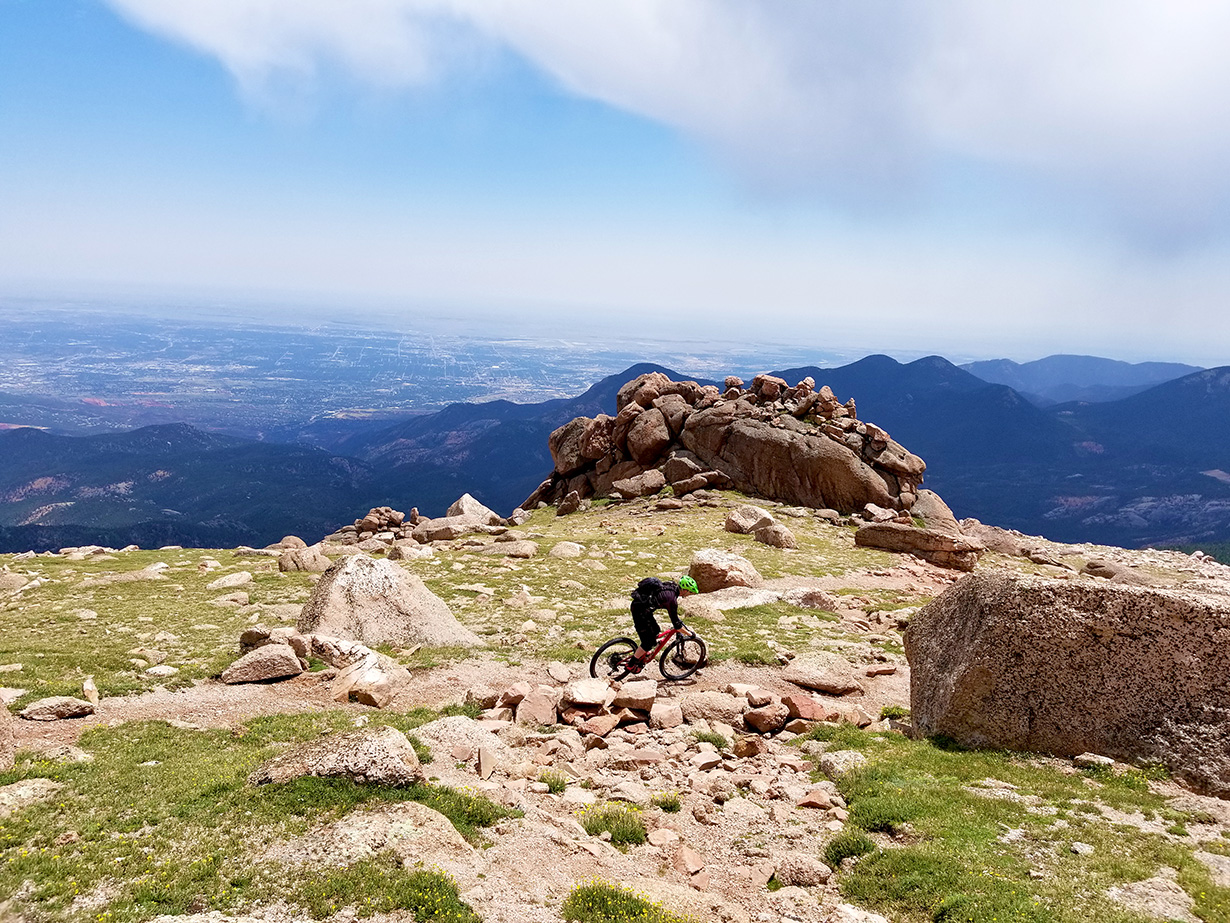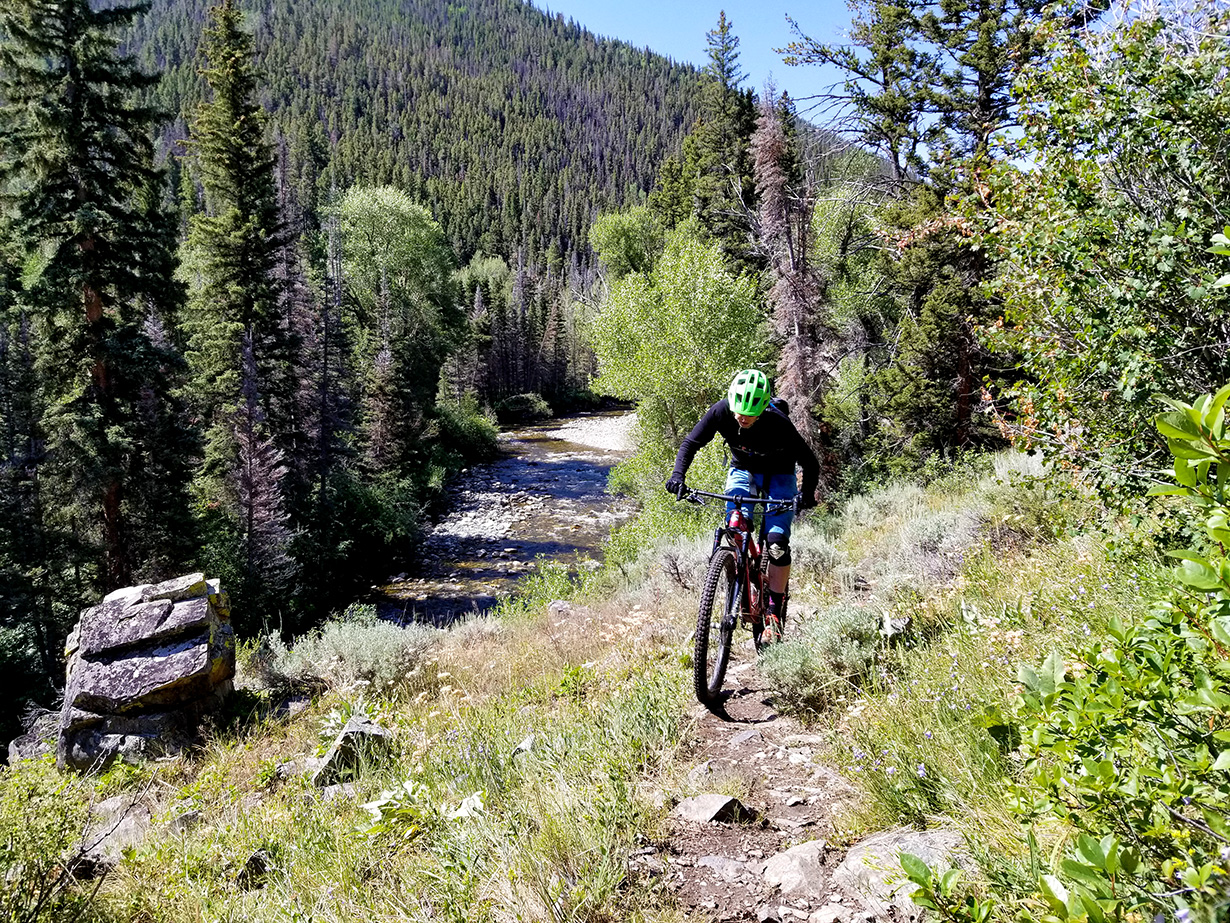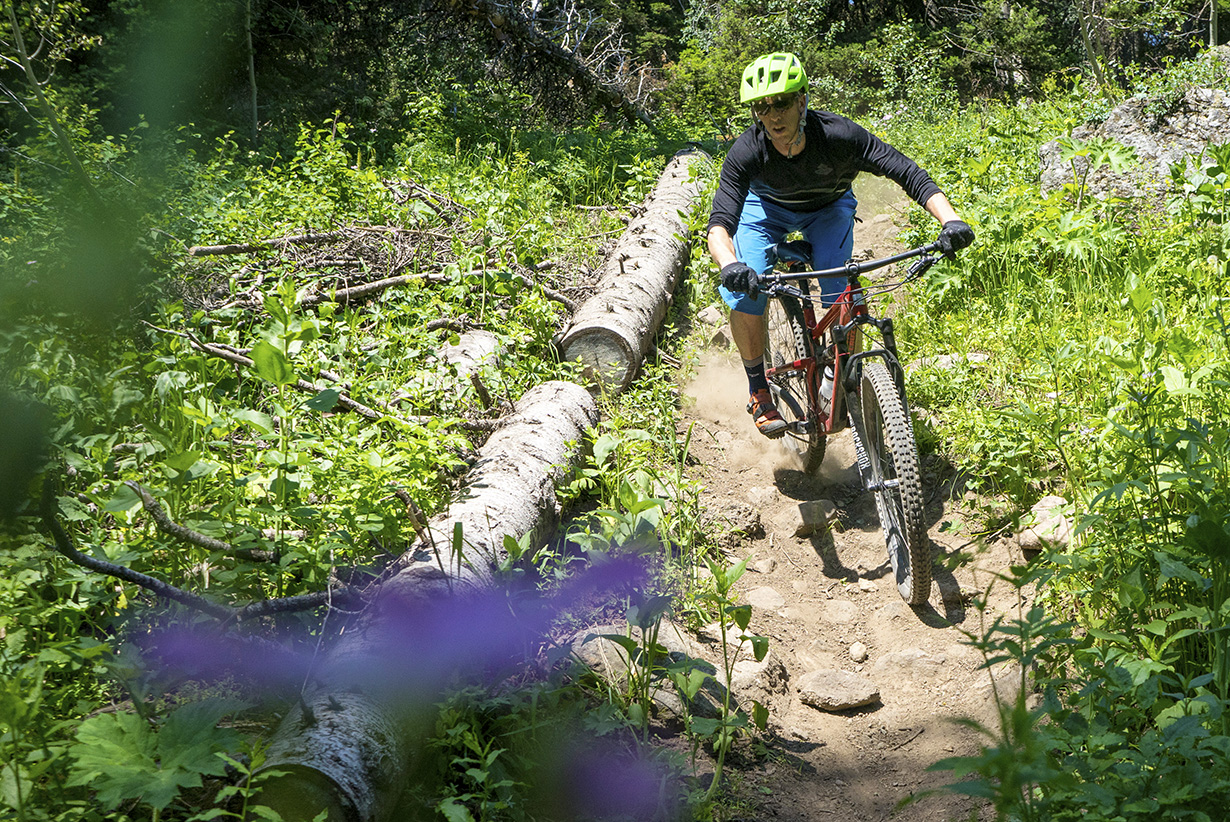
2018 Rockshox Pike RCT3
MSRP: $875
Travel:
- 27.5”: 100 – 160 mm (10 mm increments)
- 29”: 100 – 140 mm (10 mm increments)
Tested: 140 mm RCT3 on 29” wheels
Stanchions: 35 mm
Axle to Crown: 551 mm
Offset: 51 mm
Blister’s Measured Weight: 1826 g
Duration of Test: ~2 months
Test Locations: Montana, Idaho, Wyoming, Colorado
Reviewer: 5’9” 155 lbs
Intro
Since its re-debut in 2013, the Rockshox Pike has been the most prolific fork in the trail-bike segment. That’s partly due to its versatility — we’ve reviewed Pike-adorned bikes ranging from short-travel 29ers to long-travel enduro bikes.
But the biggest reason that the Pike’s presence has been so ubiquitous is simply that it’s a damn good fork. It’s not too heavy, yet it’s still stiff enough to tackle burly trails. It’s supple enough to make for a comfortable ride, but it’s also tunable enough that it can be set up for both casual enthusiasts and aggressive racers. And it has a pretty solid track record for durability; every fork needs service, but all in all, the Pike hasn’t shown itself to be a particularly needy unit.
But sometimes even already-good things can be improved upon, and earlier this year, Rockshox announced revisions to the 2018 Pike. We’ve been putting time on it this summer, and we’ve been riding it back-to-back with the old (2017) version of the Pike. And here’s what we have to report.
What’s Different?
The most obvious differences are to the casting and the lowers. Rockshox trimmed some fat away from the area around the dropouts (though the arch remains pretty similar).
The lowers and crown also get a new, shiny black finish. As expected, the dropouts remain torque-cap compatible.

Elsewhere, the brake mount bumps from a 160 mm mount to a 180 mm mount. Those odd riders who are trying to save weight with their front rotor are out of luck, but for the rest of us, it just means no more fussing with adaptors. Max rotor size remains the same at 200 mm.
The compression and lockout knob is slimmed down a bit, and in a minor stroke of brilliance, the air chamber is now opened with a cassette lockring tool rather than a socket wrench.

Internally, the biggest difference in the ride quality is probably related to the Pike’s new air spring — the DebonAir spring that’s common on Rockshox’s rear shocks now comes to the Pike. Essentially, it means that the Pike gets a bigger negative air chamber, which should help with small-bump sensitivity. And for those who want travel reduction with the flip of a switch, the Pike is still available with a dual-position air spring,
On the damper side of the fork, the Charger Damper has been revised, and is now dubbed the Charger 2. The basic premise of the damper remains the same — it’s a closed-bladder system that’s designed to offer consistent performance and minimize the threat of contamination in the oil. Compared to the original Pike Charger damper, the Charger 2 has a broader range for the low-speed compression adjustment, and refinements to the “pedal” setting make it a bit more useful. The new damper can also be configured to work with OneLoc remotes, so you can lock everything out with a handlebar mounted lever.
One downside of the 2018 Pike is simply that the options have been reduced. The new Pike is no longer available for 26” wheels, and it only comes in Boost spacing. For 27.5” wheels, the new Pike is available in 10 mm travel increments from 100 mm to 160 mm, but for 29” wheels it tops out at 140 mm (rather than 160 mm for the 2017 model).
On the Trail
I’ll start by reiterating that I thought the prior iteration of the Pike was pretty dang good. And I’ll follow that up by saying that the new version of the Pike is better. It retains everything I liked about the previous Pike — it’s stiff, reasonably light, and it gracefully handled everything I’ve thrown at it. But now it’s lighter, a bit better on small chatter, and a bit more adjustable.
The biggest difference I notice is the small-bump sensitivity; the bigger negative air chamber works as advertised, and the fork is just a bit more supple over small trail detritus than the old Pike. The more important thing here is that I didn’t find that there was any loss of mid-stroke support. To the contrary, I’d say the new Pike actually feels a touch more supportive than the old version — pushing it hard into high-speed corners never felt wallowy, and the Pike didn’t dive excessively during hard braking.

I actually found myself running lower pressures and fewer clicks on the low-speed compression adjustment as a result of that supportiveness, which I think is great. To put it more concisely, compared to the old Pike, I could get better small-bump sensitivity, still found plenty of support in corners, and had no issues with bottoming out.
The air spring in the Pike has always responded well to volume-reducing “bottomless tokens,” and the new Pike is no different in this regard. As with the old Pike, playing around with tokens can have a pretty dramatic effect on how the fork rides. And conveniently, the tokens the new Pike uses are the same as the old ones, so your stash of tokens hasn’t all of a sudden become obsolete. Despite the switch to the DebonAir spring, I found myself running the same number of tokens as I did on the 2017 Solo Air model.
As I mentioned, I actually found myself running less low-speed compression on the new Pike. It has 18 clicks of adjustment for anyone who needs it (which is 4 more clicks than the prior version). As expected, the adjustment feels pretty smooth, so no complaints there.

The vast majority of my riding was done with the fork in “open” mode, but the “pedal” and “firm” settings were also tweaked a bit for 2018. The “pedal” mode feels a bit more usable with slightly better small-bump sensitivity than the old version. And the “firm” position feels a touch firmer, but still allows for a little movement at the beginning of the fork’s stroke.
In terms of stiffness of the chassis, I can’t say I notice a difference between the old Pike and the new one. Rockshox claims the new version is stiffer, but they feel comparable to me. And yet, the new Pike is a decent amount lighter — around 75 g according to my scale — so even being equivalently stiff is noteworthy.
Issues and Downsides
I haven’t had any issues in my two months with the fork, but I haven’t put enough hours on it to really assess long-term maintenance issues. That said, I’ve owned quite a few Pikes in the past and I’ve had good luck with all of them. Basic maintenance at reasonable intervals has kept them running happy and smooth. While the 2018 saw some internal changes, I don’t foresee any of those tweaks bringing about a major change in the maintenance needs or durability of the fork.
The biggest downside I see is that the 29” version maxes out at 140 mm travel, whereas the prior generation of Pike had 29” models up to 160 mm. Especially at a time when longer-travel 29ers are becoming more common, it seems like there are more than a few bikes where a longer-travel 29” Pike would be appropriate, but such bikes will be forced up to the Lyrik — which is a great fork, but it’s significantly heavier.
Comparisons
Rockshox Lyrik – The new Pike is a bit more supple off the top than the old Pike, but the Lyrik still has a significant edge here. The Lyrik makes small bumps disappear really well, no doubt aided by its substantially stiffer chassis and larger negative air chamber. The Pike has better mid-stroke support and ramps up more quickly at the end of it’s travel, whereas the Lyrik is more reliant on bottomless tokens to avoid blowing through its travel. All in all, the Lyrik is a bigger, stiffer fork that feels considerably closer to a legitimate DH fork than the Pike. The Pike, on the other hand, is quite a bit lighter and feels substantially more efficient during out-of-the-saddle pedal efforts.

Fox 34 – The 34 is a good fork, but it’s tough not to arrive at the conclusion that the Pike is better. The Pike is noticeably stiffer, more supple on small chatter, and just as supportive through the mid stroke. The 34 is a little lighter (~40 g), and the damper is arguably a bit smoother. But I find that the Pike responds better to volume adjustments in the air chamber. I can happily ride either fork, but unless I’m really counting grams, the Pike would be my pick.
Fox 36 – Similar to the Rockshox Lyrik, the 36 is more fork than the Pike. It’s stiffer, heavier, and generally suited to more downhill-oriented endeavors. The damper on the 36 is excellent, and it does a better job of allowing the suspension to move when needed while also providing support in corners and on the brakes. The Pike is no slouch on this front either, but the 36’s damper is a bit smoother. As with the comparison to the 34, though, I find the Pike’s air volume adjustments to be more effective. At the end of the day, the Pike is a trail fork; it does an impressive job for being substantially lighter than the 36. But if you want to squeeze maximum downhill performance out of a single crown fork, the 36 or Lyrik are better options.
Bottom Line
With the new Pike, Rockshox didn’t reinvent the wheel (or rather, the fork). The prior generation Pike was great, and the 2018 Pike is just a bit better. It got lighter without getting flexier, it got better small-bump sensitivity without losing mid-stroke support, and it’s a bit easier to service.
All of that makes for a pretty clear winner, so much so that I’d rank the Pike at the top for a fork that’s competent on a pretty huge range of bikes.

Nice review. Thanks! I haven’t ridden the 2018 Pike, but compared to the 2016 on my Remedy 29er, the new Fox 34 is better in all regards, most notably, small bump sensitivity.
Previously, my Pike was inarguably better in this regard, but the changes Fox made for 2018 ride “bigger” on the trail than they do on paper. Still, hard to go wrong with either of these forks.
Crazy that RS isn’t going to at least 150 on the new version, though. Plenty of people buying 150 mm 29ers are looking for a rugged trail bike, NOT an enduro slayer, in which case the Lyrik is arguably overkill.
Unrelated bike note: The new through-shaft rear shocks from Penske/Fox/Trek are all that and a bag of chips. I didn’t expect to be very impressed, but these could easily pass the blindfold test. Glued to the ground through fast rock/root gardens. Twenty hours in, and holding up perfectly, so far.
Thanks, Noah.
How many tokens did you use in the fork?
I also agree it does not seem a smart choice to stop available travel for the 29er forks at 140mm. One big plus of the Pike (and Lyrik) is that adjusting travel can easily be achieved via switching the air shaft. Those who buy a 140mm front travel 29er and find that they want a bit more travel would just buy an air shaft and find out if their bike feels better at 150mm or 160mm travel. If that’s not possible anymore and they instead would need to sell their Pike and buy a Lyrik – that would be a major step backwards in my opinion.
Regarding the weight difference.. the 34 will need an adapter to get to a 180mm rotor, adding another 20-30g for the adaptor. The difference is now only 10-20g, for a stiffer fork!